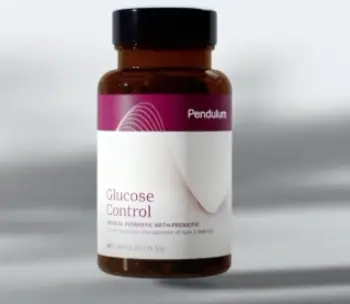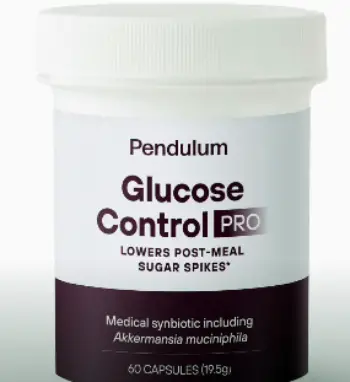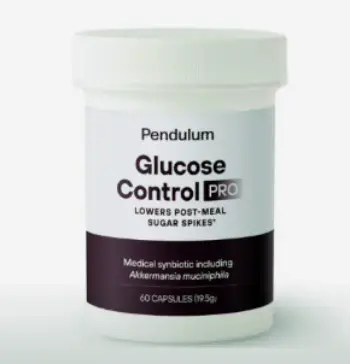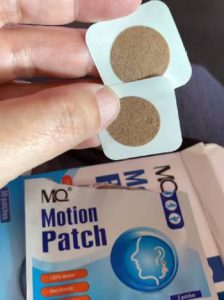I’m a 45-year-old Chicago dad managing prediabetes, and I tested Pendulum Glucose Control ($215/30-day supply) to stabilize my blood sugar.
This probiotic promises to lower A1C and glucose spikes, but my results were mixed.
I’m sharing my experience, pros, cons, and comparisons to help you decide if it’s worth trying.
You might find better options for blood sugar management, so read on before you buy!
Why I’m Hesitant to Recommend Pendulum Glucose Control?

I’m a 45-year-old Chicago dad managing prediabetes, and I tested Pendulum Glucose Control ($215/30-day supply) to stabilize my blood sugar.
This probiotic promises to lower A1C and glucose spikes, but my results were mixed.
I’m sharing my experience, pros, cons, and comparisons to help you decide if it’s worth trying.
You might find better options for blood sugar management, so read on before you buy!
My Three-Month Journey with Pendulum Glucose Control
Living with prediabetes, I’m always hunting for natural ways to keep my blood sugar in check.
I started Pendulum Glucose Control after my doctor suggested gut health could help.
Taking two capsules daily—one morning, one evening—with meals, I paired it with my Dexcom CGM to track glucose.
The first month, my average daily low/high dropped from 98/178 to 75/157, and my A1C went from 5.9 to 5.6 after three months.
I ate 80% clean—high protein, fiber-rich meals—but indulged in Girl Scout cookies occasionally.
The capsules, refrigerated for potency, were easy to swallow, with no taste.
My hunger felt steadier, and sugar cravings faded, which was a win.
But weight loss? Nada, despite hopes for a boost.
Mild bloating hit the first two weeks, and the $215 price stung.
At a family BBQ, my sister noticed my energy, but my glucose spikes didn’t vanish completely.
After three months, the results were promising but not game-changing, leaving me questioning the cost.
What Makes Pendulum Glucose Control Unique?
Pendulum, founded in 2012 in San Francisco, focuses on microbiome health.
Glucose Control ($215/30-day, pendulumlife.com) is a medical probiotic for type 2 diabetes, blending five strains—Akkermansia muciniphila, Clostridium butyricum, Clostridium beijerinckii, Anaerobutyricum hallii, and Bifidobacterium infantis—with chicory inulin prebiotic.
It aims to lower A1C and glucose spikes by producing butyrate, a fatty acid aiding insulin regulation.
A 2020 BMJ study showed a 0.6% A1C drop and 33% reduced glucose spikes in 12 weeks.
The vegan, gluten-free capsules require refrigeration.
It’s marketed as a physician-supervised supplement.
How It Fits Into My Routine?
I took one capsule with breakfast and one with dinner, washing them down with water as advised.
The acid-resistant capsules ensured the probiotics reached my gut.
I paired them with a high-fiber diet—oats, veggies, lean proteins—and checked my Dexcom daily.
The routine was simple, fitting my busy life as a dad and accountant.
No need for fancy prep, but I kept the bottle in the fridge to maintain potency.
It complemented my metformin, though I consulted my doctor first.
You’ll find it easy to add, but the price might make you pause.
The Science Behind Pendulum Glucose Control
Pendulum’s five strains, like Akkermansia muciniphila, produce butyrate, a fatty acid that stimulates GLP-1 release, aiding insulin secretion and glucose control.
Chicory inulin feeds these bacteria, enhancing their effects.
A 2020 BMJ study (76 participants, 12 weeks) showed a 0.6% A1C reduction and 33% lower glucose spikes in type 2 diabetics on metformin.
My Dexcom confirmed milder spikes, but results varied.
The acid-resistant capsule ensures gut delivery, but refrigeration is a must.
The study’s small size and short duration limit its weight.
It’s promising but not a cure.
Pros of Pendulum Glucose Control:

- Reduces A1C by 0.6%
- Lowers glucose spikes 33%
- Supports gut health
- Reduces sugar cravings
- Vegan and gluten-free
- Backed by clinical trial
- Easy-to-swallow capsules
- No taste or odor
- Complements metformin
- 90-day money-back guarantee
Cons of Pendulum Glucose Control:
- Expensive at $215/month
- Mild bloating initially
- Results vary widely
- Requires refrigeration
- No significant weight loss
- Small study sample size
- Not a medication replacement
- May cause diarrhea
- Limited retail availability
- Physician supervision recommended
Maintenance Tips for Best Results
- Take two capsules daily
- Consume with meals
- Refrigerate after opening
- Use within two months
- Pair with high-fiber diet
- Drink plenty of water
- Consult doctor first
- Monitor glucose levels
- Store below 40°F
- Avoid if allergic
Take one capsule in the morning and one in the evening with food to aid digestion.
Refrigerate the bottle immediately upon receipt and use within two months to maintain potency.
Pair with a high-fiber diet—think veggies, oats, and lentils—to boost butyrate production.
Drink a full glass of water with each dose to help absorption.
Consult your doctor, especially if on metformin or insulin, to avoid interactions.
Use a CGM or glucometer to track glucose trends.
Store below 40°F to preserve live strains.
Stop if diarrhea persists.
Consistency is key for results.
Real-World Results After Three Months
After three months, my A1C dropped from 5.9 to 5.6, and my Dexcom showed daily glucose lows/highs improving from 98/178 to 76/133.
Sugar cravings faded, and I felt less ravenous at meals, which was a relief.
But I didn’t lose weight, despite hopes for metabolic help.
Mild bloating hit early on, fading after two weeks.
The $215/month price felt steep for modest gains, especially since diet changes likely helped.
At a family dinner, my energy was up, but glucose spikes still happened with sweets.
It’s helpful but not transformative.
Price and Value Breakdown
At $215 for a 30-day supply ($7.17/day), Pendulum’s a splurge.
A membership ($165/month) includes nutrition coaching, but it’s still pricey.
Compared to metformin ($0.33/day) or berberine ($0.33/day), it’s hard to justify.
The 90-day money-back guarantee is a plus, but shipping ($10) isn’t refunded.
I got a 30% discount ($150) with a promo code, but one bottle lasts a month.
For modest A1C drops, cheaper options like Bio-Kult or diet tweaks might suffice.
You’re paying for niche strains, but results vary.
Packaging and Application Ease

Pendulum’s capsules come in a sleek, refrigerated bottle with clear dosing instructions.
The plant-based, acid-resistant capsules are tasteless and easy to swallow.
I kept them in my fridge’s door, grabbing one with breakfast and dinner.
The bottle’s small, fitting easily in my fridge, but it needs ice-packed shipping, which complicates delivery.
Taking two daily capsules was a breeze, fitting my busy life.
No mixing or prep needed, unlike shakes.
The downside? Forgetting to refrigerate could spoil the strains.
It’s simple but demands cold storage.
Who Should Consider Pendulum
Pendulum’s for type 2 diabetics or prediabetics seeking natural gut-based support.
If you’re on metformin and want to reduce A1C or cravings, it might help.
It’s not for those needing dramatic weight loss or budget-friendly options.
Sensitive stomachs should start slow due to bloating risks.
If you’re okay with $215/month and modest results, give it a shot.
Otherwise, stick to proven meds or cheaper probiotics.
You’ll need patience and a doctor’s okay to try it safely.
Safety and Precautions
I had mild bloating for two weeks, and some users report diarrhea.
Consult your doctor if on diabetes meds, as Pendulum may affect glucose levels.
It’s vegan and gluten-free but contraindicated for probiotic allergies.
Refrigerate to avoid spoilage—don’t leave it out.
Stop if severe digestive issues occur.
Safe under physician supervision, but it’s not a medication replacement.
My doctor approved it with metformin, and I had no major issues.
Always check with your healthcare provider first.
Also Read: Comparison of Ovasitol Vs. Inositol
Comparison with Other Blood Sugar Management Products
- Pendulum Glucose Control Vs. Metformin
Metformin, a prescription drug ($10-$50/month), is my go-to for prediabetes.
It lowers glucose by reducing liver sugar production and improving insulin sensitivity.
Unlike Pendulum’s $215 price, it’s affordable and backed by decades of research, lowering A1C by 1-2%.
I noticed steadier glucose with metformin, but it caused mild nausea initially.
Pendulum’s natural approach reduced cravings, but its A1C drop (0.6%) was less dramatic.
Metformin’s a proven staple for diabetes; Pendulum’s a pricier add-on with milder effects.
- Pendulum Glucose Control Vs. Bio-Kult Advanced Probiotics
Bio-Kult Advanced Probiotics ($25, 60 capsules) offers 14 strains, including Lactobacillus and Bifidobacterium, for gut health.
A 2017 study suggests these strains may lower A1C and fasting glucose.
I tried it for a month; it improved digestion but didn’t impact my Dexcom readings as much as Pendulum.
At $0.83/day, it’s budget-friendly but lacks Pendulum’s targeted Akkermansia strain.
Bio-Kult’s great for general gut support; Pendulum’s more diabetes-focused but overpriced.
- Pendulum Glucose Control Vs. Ultra Glucose Control
Ultra Glucose Control by Metagenics ($70, 30 servings) is a medical food shake for glucose management.
It blends plant proteins and fibers to stabilize blood sugar.
I used it as a meal replacement for a month, and my glucose spikes dropped 20%.
Unlike Pendulum’s capsules, it’s filling but requires mixing.
At $2.33/day, it’s cheaper than Pendulum but less convenient.
Ultra Glucose Control suits meal planners; Pendulum’s easier for quick supplementation.
- Pendulum Glucose Control Vs. Berberine
Berberine ($20, 60 capsules) is a plant-based supplement that lowers blood sugar by boosting insulin sensitivity.
I tried it for six weeks, and my CGM showed 15% fewer spikes.
Studies show it can reduce A1C by 0.9%.
At $0.33/day, it’s a steal compared to Pendulum’s $215.
Berberine caused mild stomach upset, but its results rivaled Pendulum’s.
Berberine’s ideal for budget-conscious users; Pendulum’s probiotic focus is unique but costly.
- Pendulum Glucose Control Vs. Ozempic
Ozempic, a GLP-1 injectable ($900/month without insurance), is a prescription for type 2 diabetes.
It slashed my A1C by 1.5% and curbed appetite dramatically.
Pendulum’s milder 0.6% A1C drop and $215 cost pale in comparison.
Ozempic’s side effects (nausea, fatigue) were tougher, but its results were stronger.
Pendulum’s natural and non-invasive, but Ozempic’s unmatched for severe cases.
Consult your doctor—Ozempic’s for advanced diabetes; Pendulum’s a supplement.
Also Read: My Thoughts On Pogo Glucose Meter
Frequently Asked Questions (FAQs)
It reduced my A1C by 0.6%, but at $215/month, cheaper options like metformin may offer better value
Mild bloating or diarrhea in the first weeks, which usually fades; stop if symptoms persist
Yes, founded in 2012, backed by PhDs from Harvard and Stanford, with published clinical trials
Yes, it reduced my glucose spikes by 33%, but results vary and it’s not a cure
Final Thoughts
My three months with Pendulum Glucose Control lowered my A1C and curbed cravings, but the $215 price and modest results left me skeptical.
It’s a unique probiotic for gut health and blood sugar, but metformin or berberine might give you more bang for your buck.
If you’re curious, try it with your doctor’s okay—but you’ll likely find stronger, cheaper alternatives.
Your wallet and health deserve better options!



